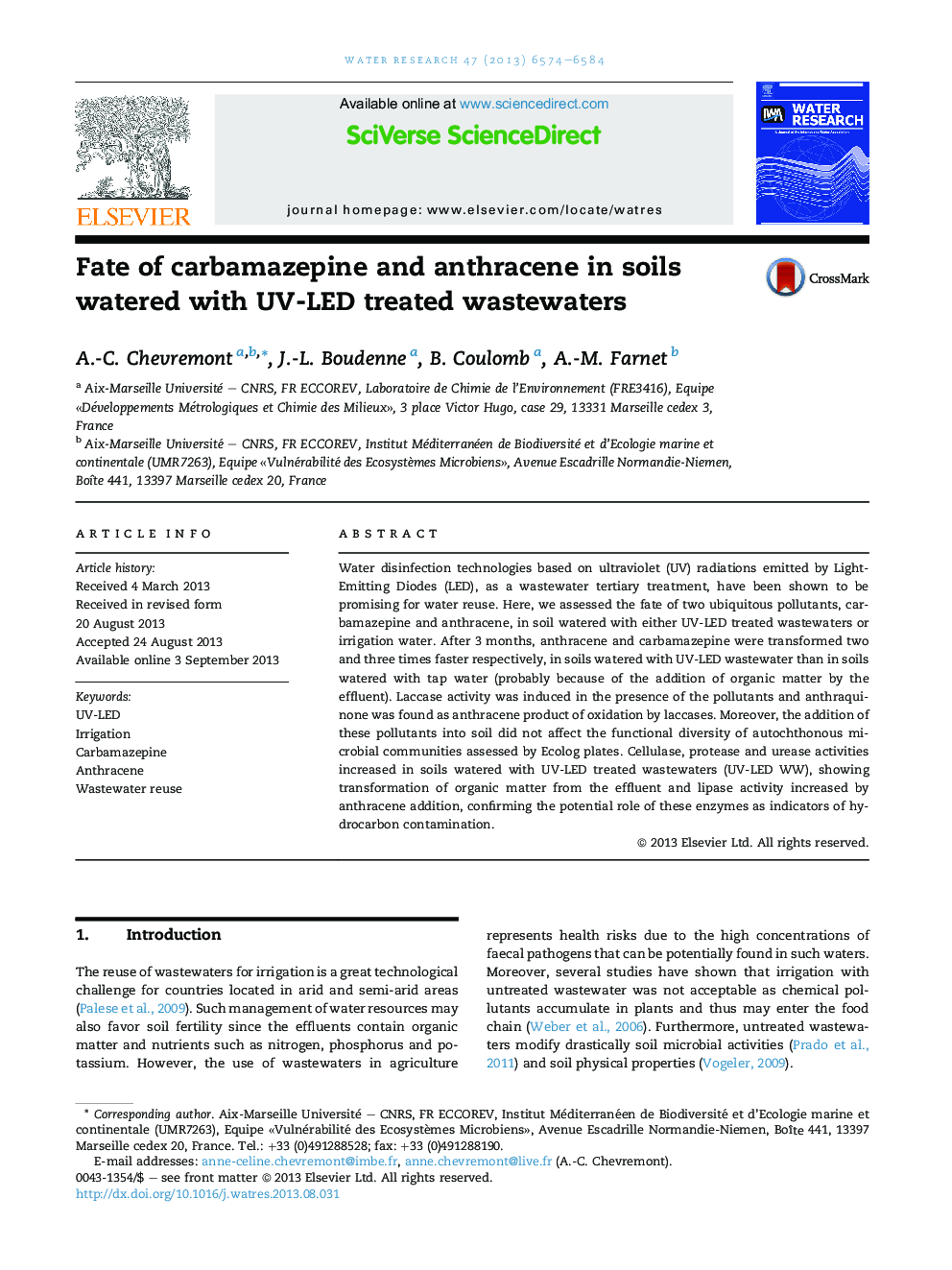| Article ID | Journal | Published Year | Pages | File Type |
|---|---|---|---|---|
| 4481909 | Water Research | 2013 | 11 Pages |
•The fate of 2 pollutants was studied in soil watered with UV-LED treated effluents.•Their transformation is faster in soil watered with effluent compared to water.•Laccase activity is induced by the presence of these aromatic pollutants.•Organic matter from the effluent (proteins, urea) is efficiently transformed.•These pollutants do not affect the functional diversity of soil microorganisms.
Water disinfection technologies based on ultraviolet (UV) radiations emitted by Light-Emitting Diodes (LED), as a wastewater tertiary treatment, have been shown to be promising for water reuse. Here, we assessed the fate of two ubiquitous pollutants, carbamazepine and anthracene, in soil watered with either UV-LED treated wastewaters or irrigation water. After 3 months, anthracene and carbamazepine were transformed two and three times faster respectively, in soils watered with UV-LED wastewater than in soils watered with tap water (probably because of the addition of organic matter by the effluent). Laccase activity was induced in the presence of the pollutants and anthraquinone was found as anthracene product of oxidation by laccases. Moreover, the addition of these pollutants into soil did not affect the functional diversity of autochthonous microbial communities assessed by Ecolog plates. Cellulase, protease and urease activities increased in soils watered with UV-LED treated wastewaters (UV-LED WW), showing transformation of organic matter from the effluent and lipase activity increased by anthracene addition, confirming the potential role of these enzymes as indicators of hydrocarbon contamination.
